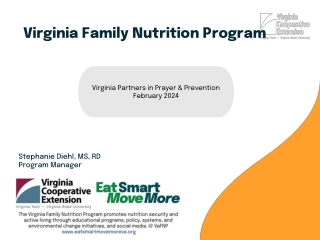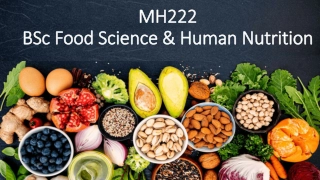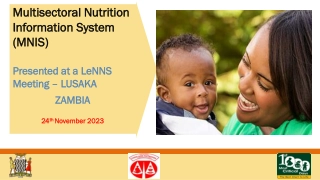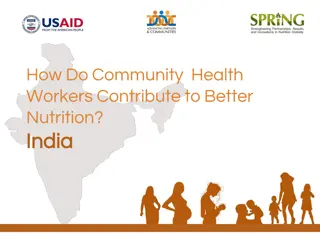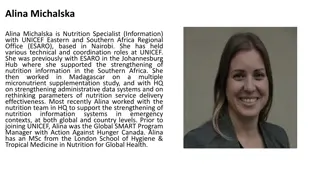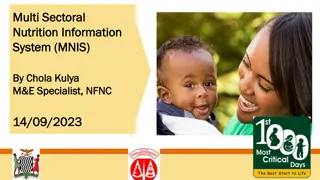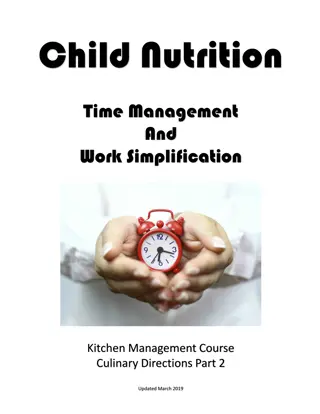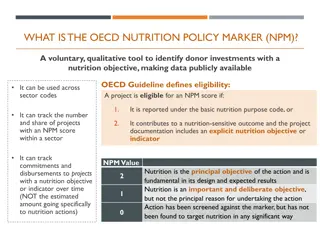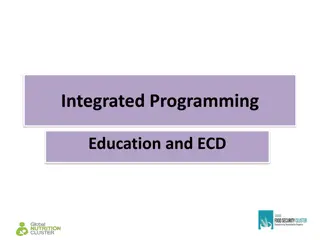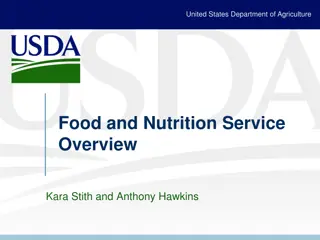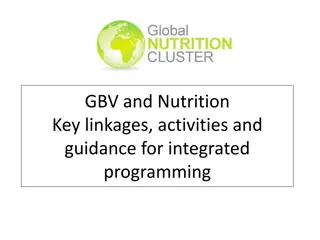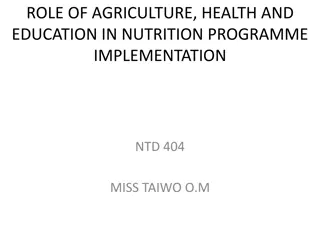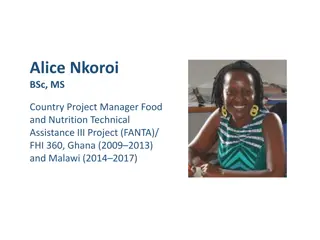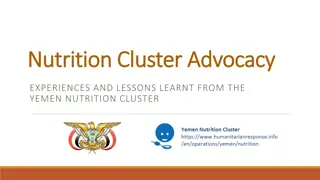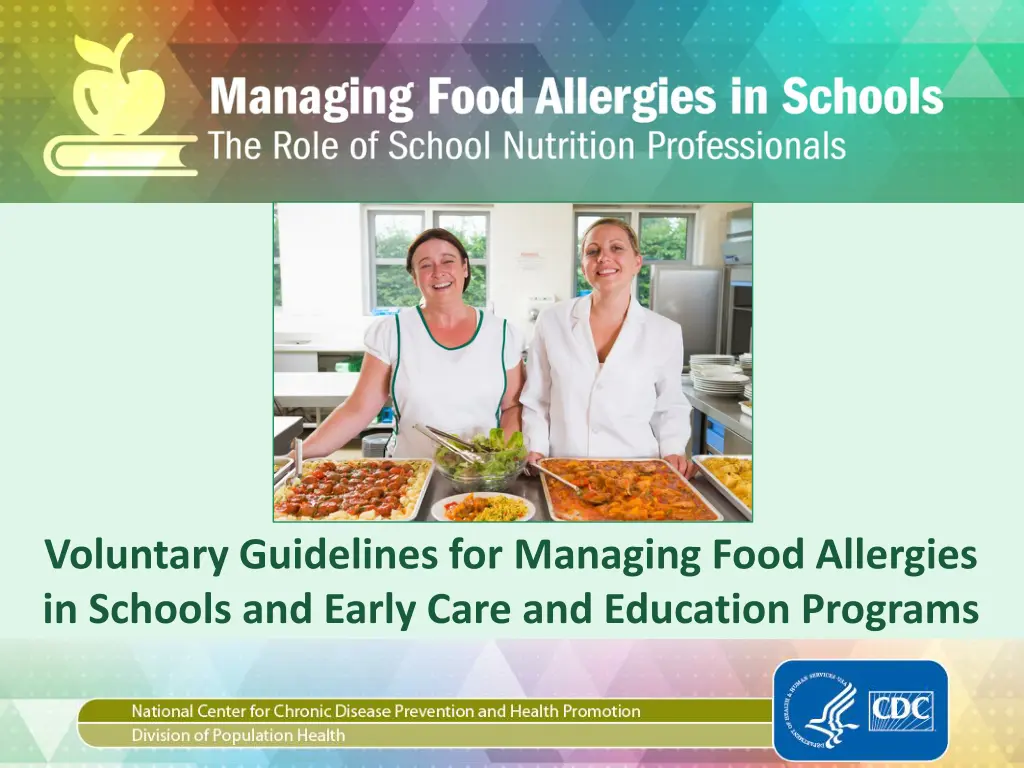
Managing Food Allergies in Schools: Guidelines and Tips
Learn about managing food allergies in schools, including symptoms, emergency responses, and creating safe environments for students. Get insights on the prevalence of allergies, actions to take, and how to recognize symptoms. Stay informed to ensure a healthy and inclusive setting for all students.
Download Presentation

Please find below an Image/Link to download the presentation.
The content on the website is provided AS IS for your information and personal use only. It may not be sold, licensed, or shared on other websites without obtaining consent from the author. If you encounter any issues during the download, it is possible that the publisher has removed the file from their server.
You are allowed to download the files provided on this website for personal or commercial use, subject to the condition that they are used lawfully. All files are the property of their respective owners.
The content on the website is provided AS IS for your information and personal use only. It may not be sold, licensed, or shared on other websites without obtaining consent from the author.
E N D
Presentation Transcript
Voluntary Guidelines for Managing Food Allergies in Schools and Early Care and Education Programs
Objectives Describe the symptoms of food allergies and life-threatening reactions. Identify three actions to prepare for and respond to food allergy emergencies. Identify three ways to create and maintain healthy, safe, and inclusive eating environments for students with food allergies. 2
Overview The guidelines can help schools manage the risk of food allergies and severe allergic reactions in students. Managing food allergies requires a partnership between families, health care providers, and schools. 3
Did you know? In a cafeteria of 100 students, at least 4 students are likely to be affected by food allergies. About 20% of students with food allergies (1 of 5) will have a reaction while at school. 25% of severe food allergy reactions (1 of 4) at school happen to students with no previous known food allergy. 4
What can you do? Get trained! Participate in food allergy training. Ask the school nurse or administrator for information about school district food allergy policies and school Food Allergy Management and Prevention Plan. Know which students in your school have food allergies and review their emergency care plans, Section 504 plans, or other accommodation plans. Help share appropriate actions to avoid allergic reactions and how to respond to food allergy emergencies with all food service staff. 5
What can you do? Learn about food allergies! A food allergy is an adverse immune system reaction that occurs soon after exposure to a certain food. Any food can cause a food allergy, but most are caused by milk, eggs, fish, shellfish, wheat, soy, peanuts, and tree nuts. A severe life-threatening allergic reaction is called anaphylaxis. 6
What can you do? Recognize food allergy symptoms! Food allergy symptoms can include Swollen lips, tongue, or eyes. Itchiness, rash, or hives. Nausea, vomiting, or diarrhea. Congestion, hoarse voice, or trouble swallowing. Wheezing or difficulty breathing. Dizziness, fainting, or loss of consciousness. Mood change or confusion. 7
What can you do? Know how to respond to food allergy emergencies! If you suspect an allergic reaction, activate the student s emergency care plan immediately and call the school nurse or administrator. Never send a student with a suspected allergic reaction to the school nurse alone. The recommended first-line treatment for anaphylaxis is the prompt use of an injectable medication called epinephrine. 8
What can you do? If you suspect anaphylaxis 1. Activate the student s food allergy emergency plan. 2. Be ready to administer an epinephrine auto-injector if you are delegated and trained to do so. 3. Call 911 or the emergency medical system immediately after administering the epinephrine. All students with anaphylaxis must be monitored closely and evaluated as soon as possible in an emergency care setting. 9
What can you do? Help prevent food allergy reactions in the cafeteria. Recognize students with food allergies. Understand how to read food labels. Prevent cross-contact of possible food allergens. Wash hands during food preparation. 10
Know the Eight Food Groups which Cause Most Serious Food Allergy Reactions 11
Help prevent food allergy reactions in the cafeteria. Develop and follow procedures for handling food allergens in the cafeteria. Develop and follow procedures for cleaning food preparation areas and cafeteria tables and chairs. Support hand washing by students before and after eating. Discourage trading or sharing of food. 12
What can you do? Help ensure a healthy and safe school environment. Work ahead of time with teachers to plan safe field trip meals and snacks for students with food allergies. Provide food allergy education to students and parents. Make sure that food allergy policies and practices address all food served at school. Report all cases of bullying to the school administrator. 13
Resources 1. Centers for Disease Control and Prevention. Voluntary Guidelines for Managing Food Allergies in Schools and Early Care and Education Programs. 2013. Available at www.cdc.gov/healthyyouth/foodallergies/ 2. Allergyhome. org resources for schools. Available at http://www.allergyhome.org/schools/ 3. Food Allergy Resource and Education (FARE). Managing Food Allergies in the Cafeteria. Available at http://www.foodallergy.org/schools/cafeteria 4. National Association of School Nurse (NASN), Food Allergy and Anaphylaxis Tool Kit. Available at http://www.nasn.org/ToolsResources/FoodAllergyandAnaphylaxis 5. NEA Health Information Network. Food Allergy Book: What School Employees Need to Know. Available at http://www.neahin.org/educator-resources/foodallergybook.html 6. School Nutrition Association. Food Allergy Resource Center. Available at http://www.schoolnutrition.org/Content.aspx?id=17241 7. U.S. Food and Drug Administration. Food Allergies: What You Need to Know. Available at http://www.fda.gov/food/resourcesforyou/consumers/ucm079311.htm 14
Questions ? 15
Thank You 16
References 1. Branum AM, Lukacs SL. Food allergy among U.S. children: trends in prevalence and hospitalizations. NCHS Data Brief. 2008;10:1-8. 2. Liu AH, Jaramillo R, Sicherer SH, et al. National prevalence and risk factors for food allergy and relationship to asthma: results from the National Health and Nutrition Examination Survey 2005-2006. J Allergy Clin Immunol. 2010;126(4):798-806.e13. 3. Nowak-Wegrzyn A, Conover-Walker MK, Wood RA. Food-allergic reactions in schools and preschools. Arch Pediatr Adolesc Med. 2001;155(7):790-795. 4. McIntyre CL, Sheetz AH, Carroll CR, Young MC. Administration of epinephrine for life-threatening allergic reactions in school settings. Pediatrics. 2005;116(5):1134-1140. 5. Sicherer SH, Furlong TJ, DeSimone J, Sampson HA. The US Peanut and Tree Nut Allergy Registry: characteristics of reactions in schools and day care. J Pediatr. 2001;138(4):560-565. 6. The Food Allergy & Anaphylaxis Network. Food Allergy News. 2003;13(2). 7. Boyce JA, Assa ad A, Burks AW, et al; NIAID-Sponsored Expert Panel. Guidelines for the diagnosis and management of food allergy in the United States: report of the NIAID-sponsored expert panel. J Allergy Clin Immunol. 2010;126(suppl 6):S1-S58. 8. Food Code, 2009 Recommendations of the United States Public Health Service, Food and Drug Administration, National Technical Information Service Publication PB2009112613. Accessed 6/25/14 at http://www.fda.gov/downloads/Food/FoodSafety/ RetailFoodProtection/FoodCode/FoodCode2009/UCM189448.pdf 17


